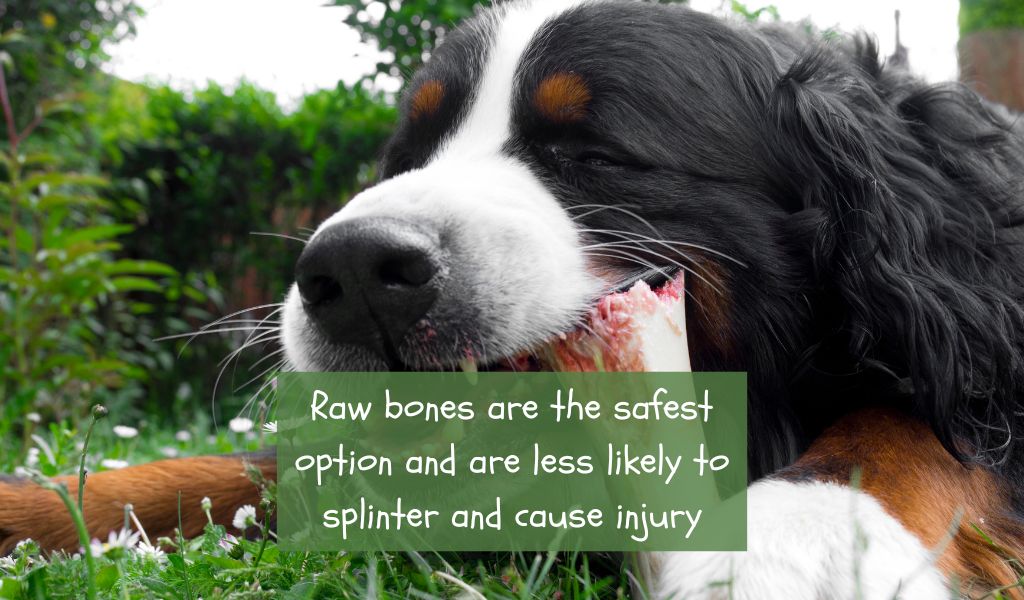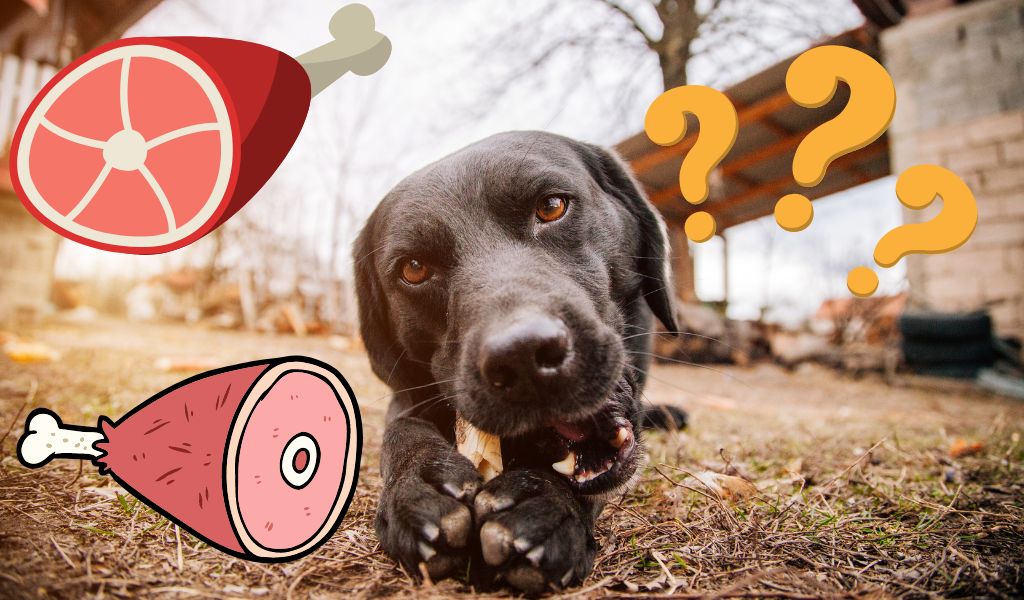As a dog owner, you may have wondered if it’s safe to give your furry friend a ham bone to chew on.
Many dogs love to gnaw on bones, and it seems like a natural activity for them.
But is it really a good idea to offer ham bones as a treat?
Ham bones can seem like a tempting treat for dogs because they are a natural byproduct of consuming ham. They are often readily available, and many people believe that they are a good way to help clean their dog’s teeth and occupy them.
Potential Dangers of Ham Bones for Dogs
Choking Hazard
Ham bones, particularly cooked ones, can pose a significant choking risk for dogs.
The bones can become lodged in your dog’s throat, causing them to choke or even suffocate.
This is a serious concern for dogs of all sizes, but especially for smaller breeds with narrower airways.
Splintering and Internal Injuries
When dogs chew on ham bones, the bones can easily splinter and break apart.
These sharp fragments can cause severe internal injuries to your dog’s mouth, throat, or digestive system.
These injuries may require immediate medical attention and can be life-threatening in some cases.
Obstruction of the Digestive Tract
In addition to splintering, ham bones can cause blockages in your dog’s digestive system.
A bone fragment may become stuck in their intestines, leading to an obstruction that can require emergency surgery to remove.

Bacterial Infections
Ham bones can also harbour harmful bacteria, such as Salmonella, that can cause serious illness in both dogs and humans.
If your dog becomes infected, they may experience vomiting, diarrhea, and other symptoms that require veterinary care.
Alternatives to Ham Bones for Dogs
Raw Bones
If you want to give your dog a bone to chew on, consider offering raw bones instead of cooked ham bones.
Raw bones are less likely to splinter and are generally safer for dogs.
However, be sure to choose large, appropriate-sized bones and always supervise your dog while they chew.
Edible Dental Chews
There are many commercially available dental chews designed specifically for dogs.
These products are created to help clean your dog’s teeth and satisfy their natural chewing instinct without the risk of injury.
Interactive Toys
Interactive toys are another great alternative to ham bones.
They can keep your dog engaged and mentally stimulated while providing a safe chewing experience.
Puzzle toys and treat-dispensing toys are popular options that can help keep your dog entertained for extended periods of time.
Homemade Dog Treats
If you prefer a more personalized approach, consider making homemade dog treats.
You can create treats tailored to your dog’s taste preferences and dietary needs while ensuring they are safe and healthy.
There are many recipes available online that use simple, dog-friendly ingredients.
Keeping Your Dog Safe When Offering Chews
Supervise Your Dog
Regardless of the type of chew or toy you provide, always supervise your dog while they are enjoying it.
This will help you quickly identify and address any potential problems that may arise, such as choking or ingestion of toy pieces.
Choose the Right Size Chew
Select a chew or toy that is appropriate for your dog’s size and chewing strength.
A chew that is too small can pose a choking hazard, while a chew that is too large may be difficult for your dog to handle and could result in injury.
Regularly Inspect Chews
Regularly inspect your dog’s chews and toys for signs of wear, damage, or potential hazards. Discard any items that are broken, excessively worn, or have sharp edges that could cause injury.
Frequently Asked Questions
1. Can dogs eat cooked ham bones?
No, cooked ham bones can be dangerous for dogs due to the risk of splintering, choking, and digestive obstructions.
2. Are raw bones safe for dogs?
Raw bones are generally safer than cooked bones, but they still carry some risks.
Always supervise your dog while they are chewing on a raw bone and choose large, appropriate-sized bones to minimize the risks.
3. How can I tell if a chew or toy is safe for my dog?
Choose chews and toys that are specifically designed for dogs, made from high-quality materials, and appropriate for your dog’s size and chewing strength.
Regularly inspect the items for signs of wear or damage, and always supervise your dog while they are enjoying their chew.
4. What should I do if my dog ingests a piece of a ham bone?
If your dog ingests a piece of a ham bone, contact your veterinarian immediately.
They may need to perform an examination, take x-rays, or recommend other diagnostic tests to determine if your dog is at risk for complications.
5. How can I keep my dog entertained without giving them a ham bone?
There are many safer alternatives to ham bones, such as raw bones, dental chews, interactive toys, and homemade treats.
These options can help satisfy your dog’s natural chewing instinct while keeping them safe and healthy.
Conclusion and final thoughts
While it may be tempting to give your dog a ham bone, the potential risks far outweigh the benefits.
To keep your dog safe and satisfied, consider offering safer alternatives such as raw bones, dental chews, interactive toys, or homemade treats.
Always supervise your dog while they are enjoying their chew and choose items that are appropriate for their size and chewing strength.

